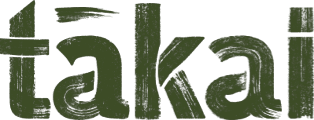
Action songs Activity
Action songs benefit pēpi by improving physical, cognitive, and social skills. Singing and moving to action songs also creates a fun environment that stimulates their senses, builds their bond with whānau, and relieves stress.
Why do it?
- A song with actions and words is a rich, multi-sesory learning and brain-building experience for baby.
- Singing and moving is a complex activity involving many parts of the brain.
- Action songs are a fun way for children to learn through repetition.
- When more than one person is involved, it becomes a social activity involving watching, listening, copying, movement and co-operation.
- Toddlers and whānau enjoy sharing time together.
- Baby hears the word for the action and feels the body part when the action is happening and the body part is touched. This helps baby’s understanding of language.
How to do it
- Use your voice and facial expressions to show your child that action songs are fun.
- Look for songs in the different languages that a whānau speaks.
- Make actions up for songs that the toddler already knows. For example:
- Tō ringa ki roto, tō ringa ki waho – Hokey tokey
- Row, row, row, your boat
- Ngā wīra ō te pahi – The wheels on the bus
- Tīrama, tīrama ngā whetū – Twinkle, twinkle little star
- Kei hea kōnui – Where is thumbkin?
- Repeat songs and actions again and again with the child so they become familiar.
- Introduce a bath song as part of their bathtime. Sing this one to the tune of 'here we go round the mulberry bush'...."This is the way we wash our face, wash our face, wash our face this is the way we wash our face on a lovely sunny morning." Add more verses for different parts of the body and different weather.
There are lots of easy to learn waiata available in the song section.
Using more te reo Māori
| Te reo Māori | English |
|---|---|
| Kei hea tō māhunga? | Where is your head? |
| Kei hea ō pakihiwi? | Where are your sholders? |
| Kei hea tō puku? | Where is your tummy? |
| Kei hea ō waewae? | Where are your legs? |
| He aha tēnei? | What is this? |
| He ihu tēnei | This is a nose |
| He waha tēnei | This is a mouth |
| E hia ō karu? | How many eyes do you have? |
| E rua ō karu, tahi, rua | You have two eyes. One, two |
| Katia ō karu | Shut your eyes |
An action song about body parts which uses the tune of 'One little, two little, three little Indians". Point to each body part as you sing.
| Te reo Māori | English |
|---|---|
| Māhunga | Head |
| Pakihiwi | Shoulders |
| Puku | Belly |
| Hope | Hips |
| Waewae | Leg |
| Taringa, whatu, ihu, waha e! | Ears, eyes, nose and mouth! |











